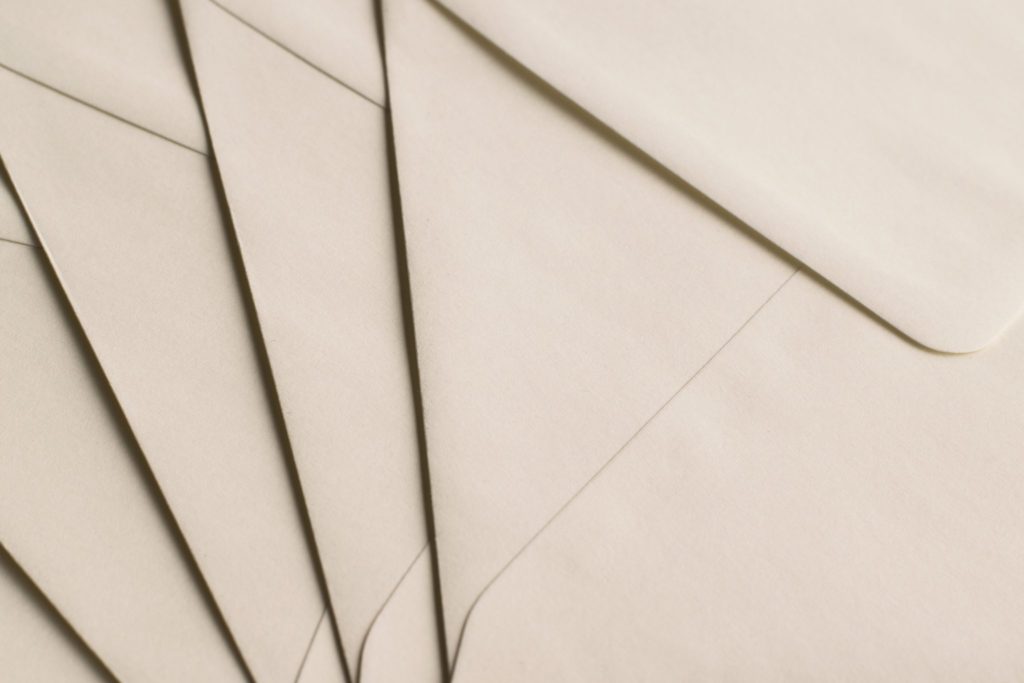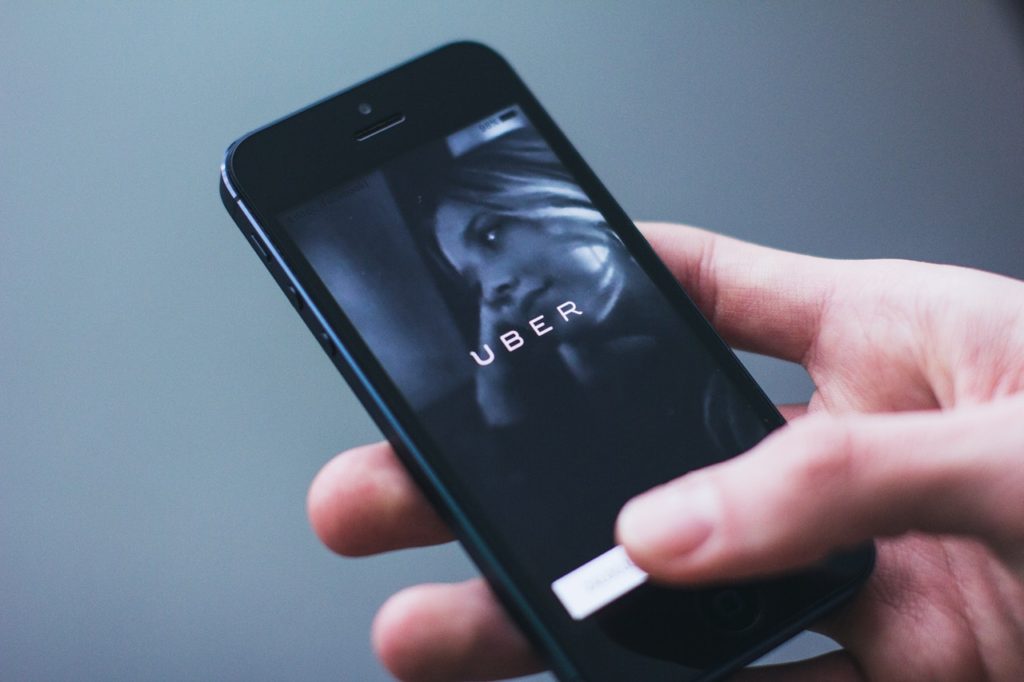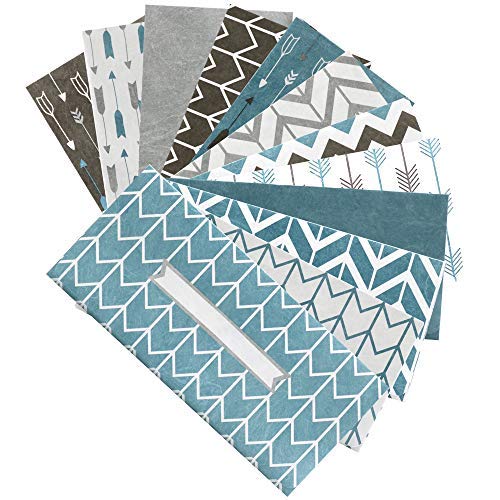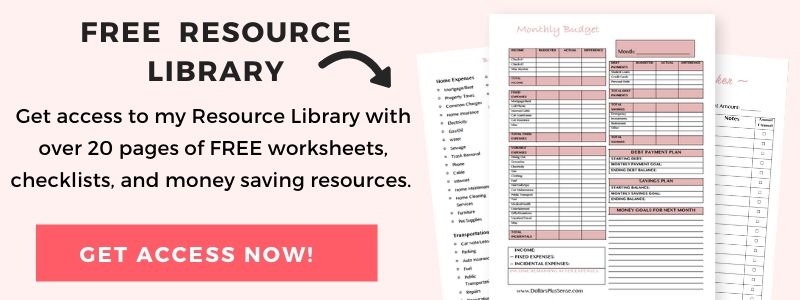Last Updated April 2, 2020
You may have heard of the cash envelope system made famous by money guru Dave Ramsey, but you might not be sure exactly how it works. Find out what the cash envelope system is and how to use it.
What Is The Cash Envelope System
The cash envelope system is a budgeting method where you use cash for the different expenses you have each month. The benefit of this method is it prevents you from overspending since you’re using cash.
An additional benefit to this method is you do not have to track every purchase if you don’t want to. You will know how much you have spent in each expense category based on how much money is left in the envelope at the end of the month.
This method is great for people who have a hard time with overspending, sticking to a budget, or logging expenses.
How To Use The Cash Envelope System
Make A Budget
The first thing you need to do is make a budget. Making a budget is the foundation of the cash envelope system. This will ensure that you know where your money is going and every penny is accounted for. You can use this FREE Monthly Budget Printable to help you get started.
You want to take the time out to set up a proper budget if you want to be successful with this system. The good news is, once you set up your budget, it will be easy to just maintain it or tweak it when necessary.

Determine Your Variable Expenses
Now that you have created your budget, you should have a good idea of what your expenses are. At this point, you want to list all of your variable expenses. A variable expense just means the expense varies, or costs a different amount every month.
Some examples of variable expenses are:
- Electricity;
- Grocery Bills;
- Personal Care;
- Entertainment; and
- Gifts and Donations.
The cash envelope system is intended for variable expenses that fluctuate. Therefore, you don’t need to use the cash envelope system for your fixed expenses. A fixed expense means it cost the same every month.
Some examples of fixed expenses are:
- Rent
- Cable
- Internet
- Cell Phone; and
- Student Loans.
For these expenses that are fixed, you should automatically pay them online or by check, and exclude them from your cash envelopes.
What Are The Budget Categories Of The Cash Envelope System?
The expense categories I like to use with my cash envelopes are:
- Housing (this covers maintenance, supplies, furniture, etc.)
- Transportation (this covers parking, fuel, taxis, public transportation, repairs, tolls, tickets, DMV fees, etc.)
- Utilities (this covers gas, electricity, etc.)
- Food (this covers groceries and dining out)
- Entertainment (this covers nightclubs, bars, concerts, movies, etc.)
- Personal (this covers spa, hair, nails, clothes, etc.)
- Health (this covers pharmacy, co-pays, doctor’s visits, vet bills, etc.)
- Gifts/Charity (this covers charitable donations, religious donations, and gifts)
- Debt (this covers credit card, medical bills, etc.)
- Miscellaneous
If you notice, I will only use my cash envelopes to cover the variable expense in each category. In other words, I will not put my rent payment in my “housing” envelope. I will only put cash to cover the variable expenses associated with that expense category.
Determine How Much Money You Want To Put In Each Cash Envelope

Once you figure out your expense categories, you need to determine the amount of cash needed for each envelope. You should already have a general idea of how much money you want to allocate to each spending category when you made your budget.
Now you have to break it down to how much money you want to put in your envelopes. In other words, you need to determine how much are your variable expenses in each expense category.
Label And Stuff Your Cash Envelopes
Take a few envelopes and label each one with a specific expense category. You can download my FREE cash envelopes to start.
If you want something a little more durable, I recommend these cash envelopes from Amazon.
It is better than regular envelopes because it is tear proof and water-resistant. This makes it great to carry around in your purse or wallet. I also love them because of their designs.
If you’re like me and want to try to extend the use of these envelopes as much as possible, I recommend putting a paper insert into each envelope to write down your expenses—instead of logging your expenses directly on the envelope. This allows you to reuse the same envelope month after month.
If you prefer these more durable envelopes, I would use the expenditure tracker paper insert I designed with my FREE cash envelopes.
Next, in the beginning of the month stuff your cash envelopes with the budgeted amount of cash you decided. You can also stuff your envelopes after every paycheck if you prefer it that way. Just divide your monthly budgeted amount by the number of paychecks you get every month.
For example, if you get paid every week, and your monthly budgeted amount for one envelope is $200, you can stuff your envelope with $50 every week. Or if you get paid every 2 weeks, stuff your envelope with $100 every pay period.
When you go to the bank to withdraw cash to stuff your envelope, make sure you get the proper denominations for each envelope.

For example, if you have two cash envelopes that require $25 each, you don’t want to withdraw a $50 bill from the bank. You want to withdraw two $20 bills, and two $5 bills. Therefore I recommend you write down on a piece of paper how many of each denomination you need before you get to the bank.
For example, if you need a total of $450 that you will divide amongst your different cash envelopes, the sheet you give to the bank teller may look something like this:
1 – $100
2 – $50
5 – $20
8 – $10
10 – $5
20 – $1
Planning out exactly what bills you need for your envelopes in advance will help you (and your bank teller) out tremendously.
Try Not To “Borrow” From Other Envelopes

You should only use the money in the envelope for purchases in their proper category. So for example, I can only use the money in my “food” envelope to purchase groceries. Once my envelope is empty, I can’t spend any more money on that particular category for the month.
I highly recommend you not borrow from other envelopes. The whole purpose of this method is to control your spending and stick to your budget. If you run out of money in your “food” envelope, raid your pantry or eat leftovers instead. Don’t borrow from other envelopes.
What To Do With Leftover Money From Your Cash Envelopes?
If you have extra money left over at the end of the month, I recommend you use it to pay down high-interest debt. If you don’t have any high-interest debt, I recommend investing or saving that money.
What To Do With All The Coins?

When using this method, you will find yourself with a lot of coins at the end of the day, week, or month. You can do two things with all that change:
Save It
I like to put all my leftover coins from a purchase into a coin jar at the end of the day. Once the jar is full, I take the change to my local bank for bills or a Coinstar machine.
If you choose to cash in at a Coinstar machine, do NOT use the option to turn your coins into bills. This is because Coinstar will charge you an 11.9% service fee. Instead, opt to redeem your change for gift cards or a charitable donation.
If you redeem your coins for a charitable donation or a gift card, the 11.9% fee is waived. Coinstar offers gift cards from companies like Amazon, Starbucks, iTunes, Home Depot, and Best Buy to name a few.
Spend It
Carry a change purse and spend the change. When paying cash, use exact change to try to get rid of some of the coins. The coins can also come in handy when paying a parking meter or buying a snack from a vending machine.
What If I HAVE To Use A Credit Card For A Purchase?
Sometimes you HAVE to use a credit card because a business might not accept cash. Start by making an additional envelope and label it “credit card.”
If I HAVE to use a credit card for a purchase (i.e. – an Uber cab ride), I normally take the cost of my expense out of that envelope and transfer it to my “credit card” envelope. The purpose of this envelope is to hold money that will go towards paying off any credit card charges you were forced to make.
You do NOT touch the money in the “credit card” envelope! At the end of the month, take the money in the “credit card” envelope and deposit it in your checking account. Then pay off your credit card in full for any variable expenses you could not pay cash for.

So for example, if I pay $30 for an Uber ride with a credit card. I will take the $30 out of my “transportation” envelope and transfer that money to my “credit card” envelope. At the end of the month, I will deposit the $30 in my “credit card” envelope to my checking account to pay off my credit card with the Uber charge made that month.
Pros Of The Cash Envelope System
The benefit of this method is you do not have to track every purchase. You will know how much you have spent in that category based on how much money is left in the envelope at the end of the month.
It also prevents you from overspending and you will avoid overdraft fees. Sometimes spending with a credit card could feel like you’re spending “Monopoly money.” Meaning, it doesn’t feel like you’re using real money until the credit card bill comes every month.
If you are not conscious of your spending, you can easily overspend with a credit card. Because cash is tangible and instantly parts with you, you are more aware of how much you are spending and are likely to spend less than you would with a credit card.
Cons Of The Cash Envelope System
The cash envelope system also has a few disadvantages. You may have large sums of cash in your home or on your person, and this can put you at risk of loss or theft.
You also will not have the protection and rewards that credit cards can offer. Finally, you lose out on any potential interest on your savings because your cash is in an envelope and not in a savings account.
You need to take these drawbacks into consideration when deciding if you want to use the cash envelope system.
Summary
The cash envelope system is a great budgeting tool for those that want to get a handle on their spending and build more disciple. So let’s review what you need to do to start using the cash envelope system:
- The first thing you want to do is make a budget.
- Next, determine your variable expenses and how much cash you want to put in each envelope.
- Label each envelope with a different spending category.
- Then, pull out cash from the bank to stuff your envelopes each month or each pay period.
- Once you run out of cash in an envelope, that’s it for the month!
This is a great method I recommend if you have a hard time sticking to budgets.
Related Articles:
- How To Use The Cash Envelope System Without Cash
- How To Choose The Right Budgeting System
- 5 Top Financial Mistakes To Avoid (And Actionable Tips)
If you want to remember this article, post it to your favorite Pinterest board.








9 Comments on How To Use The Cash Envelope System